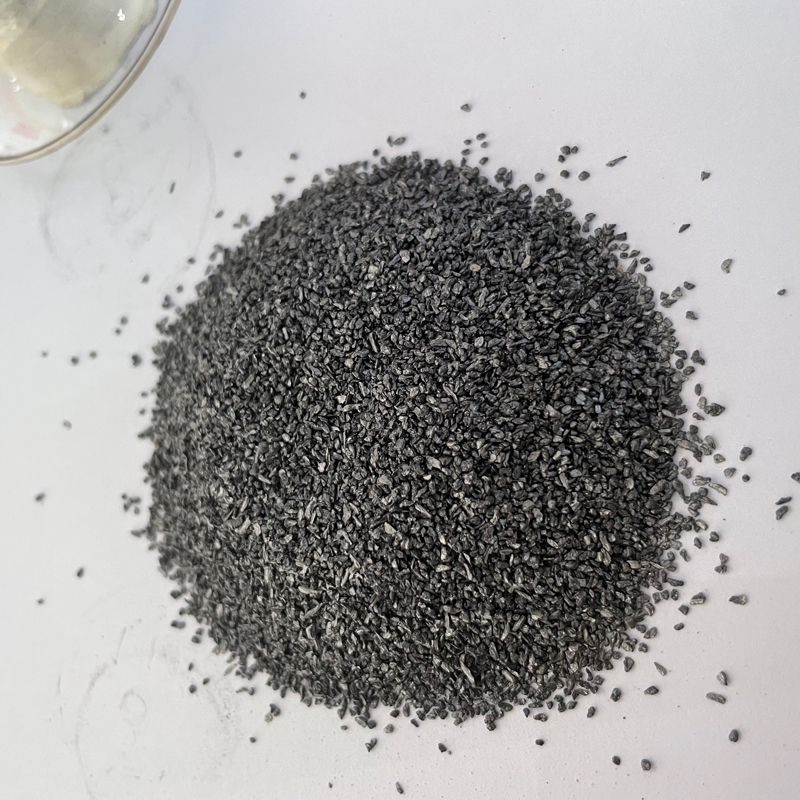
Why Graphite Is an Excellent Electrical Conductor
2025-02-26
Scientific Principles and Industrial Relevance in Graphite Electrodes
Graphite, a crystalline allotrope of carbon, is renowned for its outstanding electrical conductivity despite being a non-metal. This exceptional property arises from its unique atomic structure, delocalized electron behavior, and highly anisotropic crystalline arrangement. These features make graphite indispensable in industrial applications—especially in graphite electrodes used for electric arc furnace (EAF) steelmaking and metallurgical refining.
Atomic Structure: Hexagonal Layered Lattice
Graphite consists of carbon atoms arranged in a two-dimensional hexagonal lattice, which extends indefinitely in the a–b plane. Each carbon atom forms three strong σ (sigma) covalent bonds with its neighbors, resulting in stable graphene layers with a bond length of approximately 1.42 Å. These layers stack along the c-axis, held together by weak van der Waals forces, with an interlayer distance of 3.35 Å.
Each carbon atom has four valence electrons: three participate in σ bonds, and the fourth occupies a p_z orbital perpendicular to the plane. The lateral overlap of these orbitals generates an extended π (pi) electron cloud, delocalized over the entire layer.
Delocalized π-Electron Cloud: The Basis for High Conductivity
The delocalization of π electrons allows them to move freely within the graphene plane, forming a continuous network of mobile charge carriers. When an external electric field is applied, these electrons migrate with minimal scattering, resulting in high in-plane conductivity and low electrical resistivity.
The symmetry and uniformity of the hexagonal lattice further reduce scattering and enhance electron mobility, comparable to that found in certain metals.
Interlayer Electrical Conductivity: Limited but Significant
Although electron mobility is highest within the planes, graphite also exhibits weak but notable out-of-plane conductivity. This is due to quantum tunneling and thermal excitation, which enable a small number of electrons to transition between adjacent layers. This phenomenon contributes to graphite’s three-dimensional conductivity, though it remains highly anisotropic—with in-plane conductivity being nearly 100 times greater than through-plane conductivity.
Low Electron–Phonon Coupling: Enhanced Efficiency at Elevated Temperatures
Graphite demonstrates low electron–phonon coupling, meaning that interactions between free electrons and lattice vibrations are minimal. This results in reduced carrier scattering and maintains electrical performance even at elevated temperatures. Combined with its ultrahigh melting point (>3600°C) and chemical stability, graphite is ideal for high-temperature conductive applications.
Graphite Electrodes: Technical Specifications and Industrial Applications
Graphite’s unique conductive properties make it the material of choice for manufacturing graphite electrodes used in:
1.Electric Arc Furnaces (EAF)for primary steelmaking
2.Ladle Furnaces (LF)for secondary metallurgy and refining
3.Lithium-ion battery anodesdue to intercalation capacity and conductivity
4.Brushes in electric motors and generatorsfor efficient current transfer
5.Electrolytic cellsin the production of aluminum, magnesium, and chlorine
6.High-temperature furnaces, crucibles, and nuclear moderators
Key Technical Parameters (UHP Grade)
| Parameter | Typical Value |
| Bulk Density | 1.68 – 1.73 g/cm³ |
| Electrical Resistivity | 4.5 – 5.8 μΩ·m |
| Flexural Strength | ≥12 MPa |
| Young’s Modulus | 8 – 14 GPa |
| Ash Content | ≤0.2 % |
| Thermal Expansion Coef. | (1.0–1.2) × 10⁻⁶ /°C |
| Nipple Type | 3TPI / 4TPI / 4TPIL |
| Max Operating Temperature | >3000°C |
Conclusion
Graphite’s extraordinary conductivity is the result of its delocalized π-electron network within robust graphene layers. This, combined with anisotropic conduction, thermal stability, and low energy losses, sets graphite apart from most non-metals and even some metals. These properties underpin its dominance in metallurgical, energy storage, and electrochemical industries—where graphite electrodes are central to efficiency, durability, and performance.


Please leave us a message
- English
- French
- German
- Portuguese
- Spanish
- Russian
- Japanese
- Korean
- Arabic
- Irish
- Greek
- Turkish
- Italian
- Danish
- Romanian
- Indonesian
- Czech
- Afrikaans
- Swedish
- Polish
- Basque
- Catalan
- Esperanto
- Hindi
- Lao
- Albanian
- Amharic
- Armenian
- Azerbaijani
- Belarusian
- Bengali
- Bosnian
- Bulgarian
- Cebuano
- Chichewa
- Corsican
- Croatian
- Dutch
- Estonian
- Filipino
- Finnish
- Frisian
- Galician
- Georgian
- Gujarati
- Haitian
- Hausa
- Hawaiian
- Hebrew
- Hmong
- Hungarian
- Icelandic
















